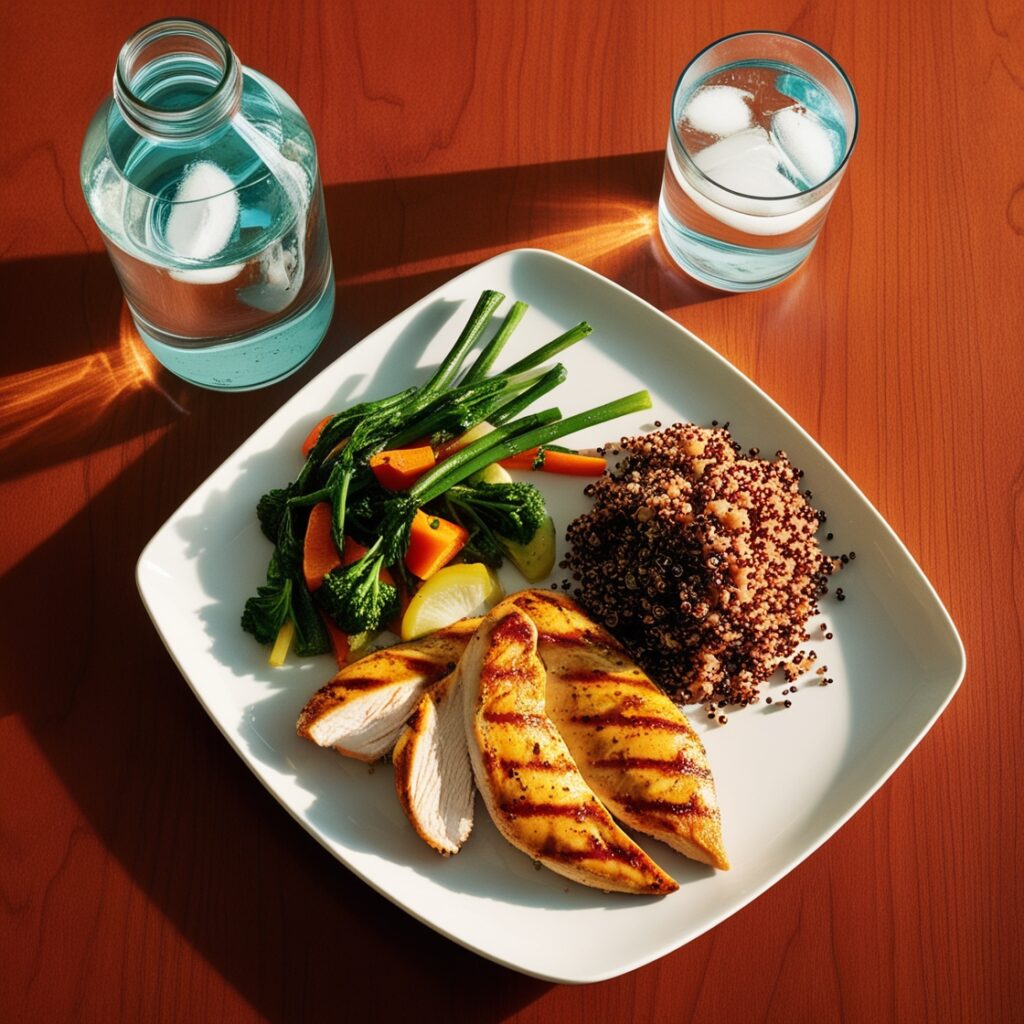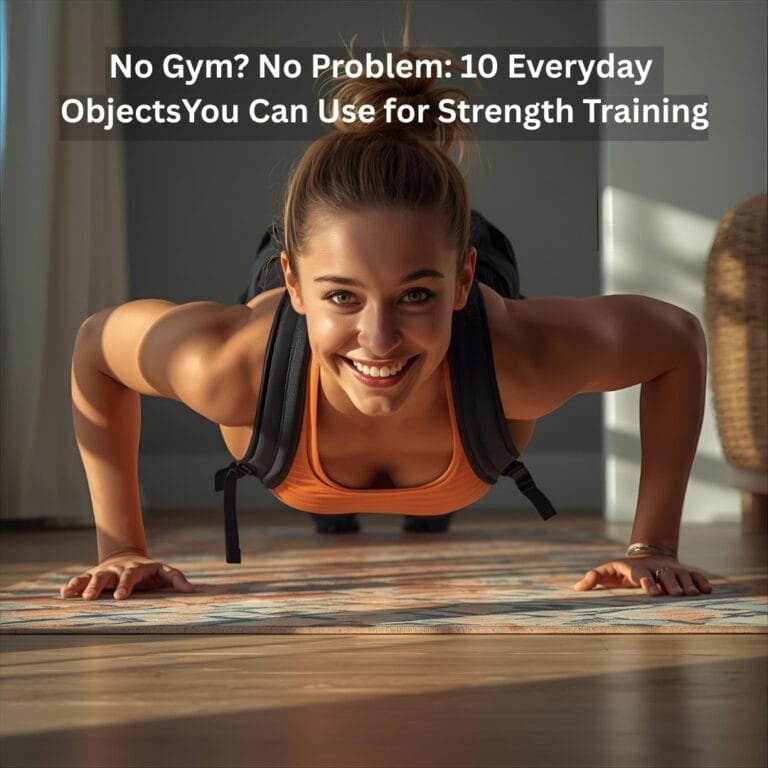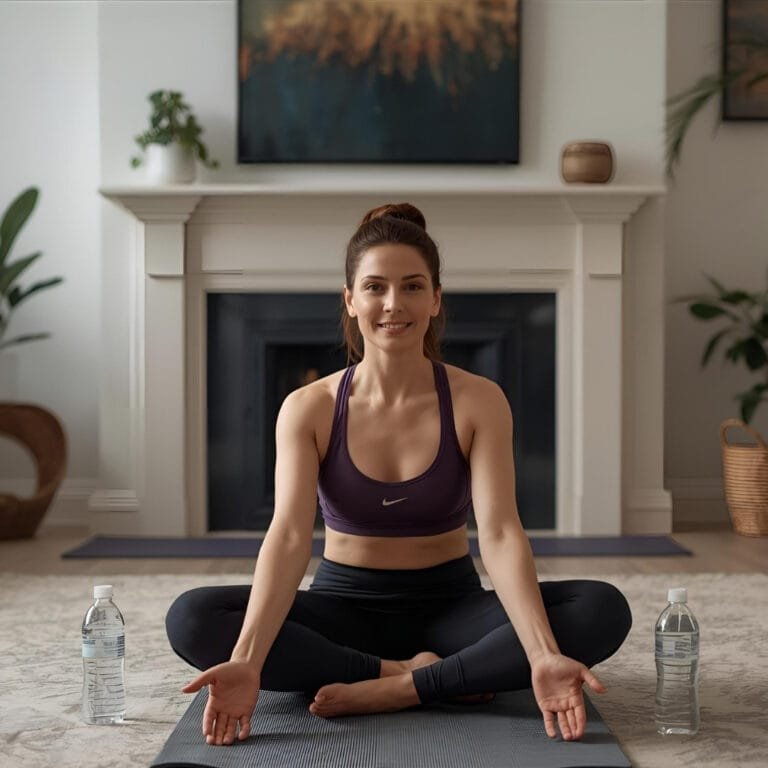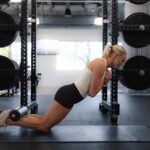Disclosure:
Thank you for reading this post, don't forget to subscribe!
Some of the links on this website are affiliate links. This means that if you click on the link and make a purchase, we may receive a small commission at no extra cost to you. Your support helps us keep the site running.Learn more on my Privacy Policy and Affiliate Disclosure page. Thank you for your support!

Imagine having a workout plan that feels like it’s been stitched together just for you. That’s the magic of a customized workout plan. I’m going to take you through why a one-size-fits-all approach to fitness just doesn’t cut it and how personalizing your fitness regimen can revolutionize your progress. This isn’t just about matching exercises to your body type; it’s also about aligning with your schedule, preferences, and life as a whole.
Customizing your workouts can lead to better results and a heightened sense of personal accomplishment. You’re going to find out about how individualized plans cater to different bodies and goals, making sure that every drop of sweat is propelling you towards your personal summit. Picture tailored workout sessions that not only challenge you but also excite you, making exercise a part of your life you genuinely look forward to.
So, what should you keep in mind to establish a fitness vision that’s as unique as you? First, take stock of your aspirations. Are you aiming to run your first 5K, or are you on the path to building strength for physical work? Maybe it’s about finding peace and balance through yoga? Choose something that resonates with you deeply. I’m here to guide you toward understanding your own fitness narrative so that each step, each lift, and each stretch is meaningful and purposeful.
Evaluating Your Fitness Baseline

I’m going to let you in on a crucial step before you dive headfirst into any workout regimen: assessing your current fitness level. This isn’t just about knowing where you stand; it’s about building a plan that works for you and not against you.
You can start by performing simple fitness assessments that might include cardiovascular tests like a brisk walking or jogging test, strength assessments such as push-ups or sit-ups, and flexibility measures. Don’t worry too much about the numbers. The goal here is to get a snapshot of your abilities.
read next: Discover the Top 5 Home Workout Equipment For A Full–Body Workout Now!
In my opinion, identifying your strengths and weaknesses is a game-changer. It helps tailor a workout plan that amplifies your strong points while bolstering the weaker areas. Remember, your fitness journey is uniquely yours – no one else’s benchmarks need apply.
Having a solid understanding of your current fitness level isn’t just for setting the starting blocks. It ensures that each step you take is one you’re ready for, reducing the risk of injury and setting the stage for consistent progress. So, gather your baseline data with confidence; it’s the compass that will guide your fitness journey onward.
Crafting the Core of Your Workout

I’m here to help you with differentiating between the various types of exercises you can incorporate into your customized workout plan. Understanding the distinct benefits of each type will enable you to make informed choices that resonate with your fitness goals. That’s going to include cardio workouts, strength training exercises, and flexibility and mobility sessions, each playing a vital role in your fitness.
learn more about: How To Set Up A 7-Day Workout Schedule, According to Experts-Forbes Health.
So, what’s the deal with cardio? Cardio exercises are the ones that get your heart rate up and keep it there for a period of time. These exercises are fantastic for burning calories, improving heart health, and increasing endurance. On the other hand, strength training is all about building muscle and boosting your metabolism. It requires resistance, such as weights or your own body weight, to challenge your muscles and make them stronger. Now, don’t overlook flexibility and mobility workouts. They might not seem as intense, but they’re essential for a well-rounded fitness plan. These exercises help maintain the range of motion in your joints, reduce the risk of injuries, and can improve your overall performance in both cardio and strength training.
Choosing the Right Type of Exercise isn’t just about what you like (although that’s super important), it’s also about what your body needs and what will help you reach your goals. Want to run a marathon? Your plan’s going to be heavy on the cardio with regular long-distance runs. Looking to build muscle mass? Your sessions will center around weightlifting, with a focus on compound movements. And imagine this: you’re flexible like a gymnast, that’s where regular stretching and mobility work come into play, complementing your strength or cardio routines.
In my opinion, it’s key to choose a variety of exercises within these categories to prevent boredom and to work different muscles. A mix can help you achieve a more rounded level of fitness and keep your training exciting. You’ll see in the next section how we’ll string these exercises into an effective routine.
Find out more about: Chest press with weight machine – Fitness mayo clinic.
Strategizing Your Workout Schedule

I’m going to walk you through what may seem like a daunting task: scheduling your workouts. But don’t worry, with the right approach, you can craft a plan that’s as enjoyable as it is effective.
You’re going to find out about the importance of a structured yet flexible routine. Choose something that resonates with your lifestyle and fitness level. Remember, your first attempt doesn’t need to be perfect; you can always adjust your approach down the road.
Here’s my strategy on mapping out your week: aim for a balanced mix. Alternate between different workout intensities and types. If you hit the weights on Monday, consider a cardio session on Tuesday. This isn’t just about muscle recovery; it’s also about keeping things interesting.
In my opinion, rest days are sacred. They’re crucial to prevent burnout and overtraining. So, make sure to schedule at least one or two days for rest. And rest doesn’t necessarily mean doing nothing. Active recovery, like a gentle walk or yoga, can work wonders.
Now, moving into the nutrition and hydration chapter of your fitness journey; think of your body as a machine. Without the right fuel, it won’t run efficiently. Read on, and I’ll guide you how nutrition and hydration are pivotal for your workout performance and overall well-being.
The Role of Nutrition and Hydration in Fitness

Understanding the fuel requirements of your body is pivotal to maximize your workout effectiveness. This isn’t just about keeping energy levels high; it’s about ensuring that every effort you put into exercise translates into results. Nutrition is the cornerstone of a solid workout regimen. Choosing the right foods pre and post-workout can lead to better performance and quicker recovery.
further reading: The Ultimate Guide to Building a Strong Chest-Top 10 Exercises for Massive Pecs.
When tailoring your diet to your fitness routine, focus on balanced meals rich in proteins, carbohydrates, and healthy fats. Proteins are crucial for muscle repair, carbohydrates provide you with energy, and fats are vital for overall health. It’s also important to time your meals to ensure that you have enough fuel during your workouts without feeling sluggish.
Hydration is just as significant as the food on your plate. Being well-hydrated ensures that nutrients flow through your body, waste products are eliminated efficiently, and your joints are well-lubricated. It also helps manage body temperature, reducing the risk of heat-related stress during exercise.
While individual needs may vary, a general recommendation is to drink at least eight 8-ounce glasses of water per day, with additional intake before, during, and after intense workout sessions. Don’t wait until you’re thirsty; make hydration a constant habit.
As you continue to develop your custom workout plan remember that your approach to nutrition and hydration plays a starring role. The food and liquids you consume provide the resources needed for your body to perform, adapt, and ultimately thrive under the demands of your exercise regimen.
Putting It All Together: Your Fitness Journey Awaits

You’ve just ventured through the essential steps of creating a customized workout plan, and I’m confident that you’re equipped to take your fitness journey to the next level.
Remember, success in fitness is a marathon, not a sprint. It’s about making consistent choices that align with your goals and adjusting your plan as your body and needs evolve. Don’t worry too much about the occasional misstep; what’s important is that you stay the course.
I really hope that the insights and guidance provided here resonate with you and spark a sense of excitement about the possibilities. Choose a starting point that feels manageable but still challenges you. Your workout plan is not engraved in stone; you can always adjust your approach down the road.
My parting advice? Start simple, stay determined, and don’t be afraid to seek professional guidance if you feel you need it. And most importantly, listen to your body – it’s your most reliable fitness consultant.
Explore more from morningscape mindset media:
- Smart Biceps Training: A Science-Backed Blueprint for Bigger, Stronger Arms
- Life After Rehab: Living with Resilience and Finding New Strength
- Manifestation Myths: What the Law of Attraction Gets Wrong (and Right)
- Cassava 101: Nutrition, Benefits, and How to Add It to Your Diet
- No Gym? No Problem: 10 Everyday Objects You Can Use for Strength Training
Conclusion
Creating a customized workout plan is a powerful tool to achieve your fitness goals. By assessing your fitness level, setting SMART goals, and designing a balanced schedule, you can create a plan that works for you. Stay consistent, track your progress, and make adjustments as needed to stay on track.
FAQs
Can I create a workout plan without a gym membership?
Yes, many effective workouts can be done at home with minimal equipment.
What should I do if I miss a workout?
Don’t stress. Simply resume your plan the next day or adjust your schedule to make up for the missed session.
Is it necessary to consult a professional to create a workout plan?
While it’s not necessary, consulting a professional can provide personalized guidance and ensure you’re performing exercises correctly.
How important is diet in a workout plan?
Diet is crucial as it provides the energy and nutrients needed to fuel your workouts and aid recovery.
Can I create a workout plan without a gym membership?
Yes, many effective workouts can be done at home with minimal equipment.
What should I do if I miss a workout?
Don’t stress. Simply resume your plan the next day or adjust your schedule to make up for the missed session.
Is it necessary to consult a professional to create a workout plan?
While it’s not necessary, consulting a professional can provide personalized guidance and ensure you’re performing exercises correctly.
How important is diet in a workout plan?
Diet is crucial as it provides the energy and nutrients needed to fuel your workouts and aid recovery.
Can I include activities like yoga and pilates in my workout plan?
Absolutely. Yoga and pilates are excellent for flexibility, strength, and mental well-being.
Ready to take your fitness journey to the next level? Start creating your personalized workout plan today and experience the benefits of a routine tailored just for you! Whether your goal is weight loss, muscle gain, or improving endurance, a customized workout is the key to unlocking your full potential.
I’d love to see you flourish in your personalized fitness quest. So lace up your sneakers, hit play on your favorite pump-up playlist, and let the world see what you’re made of. And remember, I’m here to help you along the way.
mORE ABOUT:
HEALTH / WELLNESS / FITNESS / NUTRITIO
SHARE THIS ARTICLE







